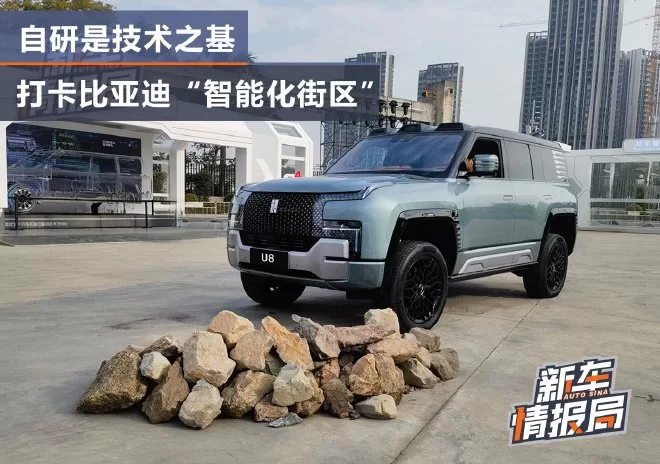
The evolution of cars has been so fast. A few years ago, cars were still chasing after the thermal efficiency and power of engines, the fast and smooth shifting of gearboxes, and the “high-end feeling” of chassis during driving. At that time, new energy vehicles were still a vague concept of a “big trend.” But now, new energy vehicles have truly entered our lives. With the acceleration and deepening of the electrification process, we also see a broader trend: under the natural advantage of electrical architecture, more intelligent cars are accelerating towards us. Cars are no longer just a means of transportation, but are gradually evolving into the “third space” of people’s lives. As part of the leading array of new energy, BYD, which stands on technology, has now also made “intelligence” a major focus of its “technology pond,” and has quickly implemented the results in new vehicles. At the “Dream Day” event with the theme “Technology, Salute to Dreams” on the 16th, BYD showed us its understanding of intelligence and its phased practical results, and also clearly demonstrated its future strategic direction. Before the event officially started on the 13th, we went to BYD for a sneak peek, so what exactly is the “Intelligence Day” all about? Let’s experience it together. In BYD’s park in Pingshan, Shenzhen, the company has set up all the experience projects of the “Intelligent Zone,” including four main sections: vehicle intelligence, intelligent cockpit, intelligent parking, and intelligent driving. Vehicle Intelligence
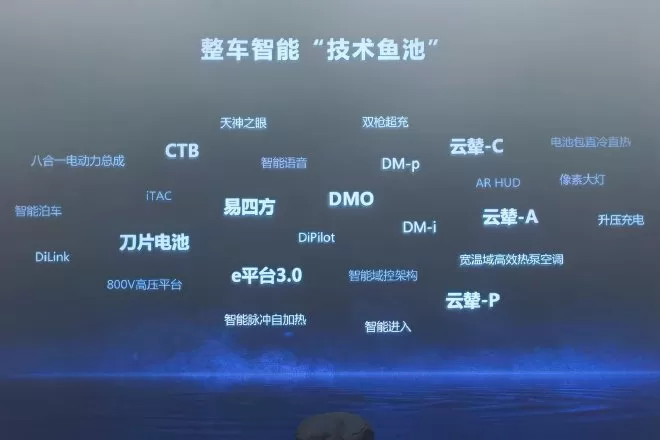
BYD proposed the concept of intelligent vehicles and summarized the attributes of intelligent vehicles with “one brain, two ends, three networks, and four chains”. The “one brain” refers to the central brain that participates in and leads all perception, decision-making, and execution; the “two ends” refer to the on-board AI and cloud AI, which are deployed in real time; the “three networks” refer to the satellite network, 5G network, and vehicle network, which are integrated; the “four chains” refer to the sensing chain, control chain, execution chain, and data chain, which are deeply interconnected to achieve flexible perception, precise control, and coordinated execution, allowing the entire vehicle to achieve breakthrough functions and improved experiences. On site, the intelligent vehicle division set up the e-platform 3.0, cloud chariots, Xuanji architecture, and Yisifang’s platform, and arranged for the dynamic experience of Yisifang’s concept car on the dynamic square.

The e-platform 3.0 is familiar to us, it is a pure electric exclusive platform launched by BYD after 5 years of development and billions of dollars in investment. It is compatible with various layouts including front-wheel drive, rear-wheel drive, and all-wheel drive, covering a variety of vehicle sizes from A to D class. It is BYD’s latest pure electric platform, and the newest model on the e-platform 3.0 is the sea lion from the Ocean series.
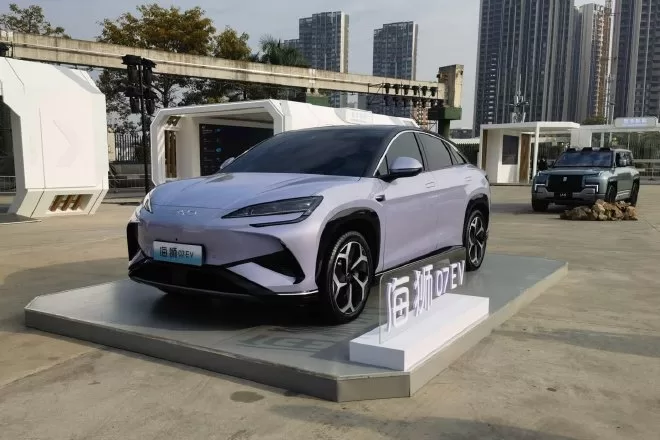
BYD’s e-platform 3.0 is a technological advancement in vehicle architecture. It has led to the development of new electric drive technology, battery technology, battery management technology, and intelligent design language. These technologies are highly integrated with the e-platform 3.0, optimizing and enhancing product performance in terms of safety, efficiency, intelligence, and aesthetics. For example, BYD’s CTB battery pack integrated into the chassis, effectively solving the performance and safety issues of the battery system. The integration of motor, reducer, motor controller, power distribution unit, DC-DC, OBC, VCU, and BMS subsystems into the eight-in-one motor focuses on performance and efficiency. It can be said that any component under the “mother” of the e-platform is not a “son”.

Since its release in April, BYD’s self-developed cloud carriage system has become the world’s first intelligent body control system exclusive to new energy vehicles. It also marks BYD as the first company to master the 3-axis 6-degree-of-freedom body control technology. With over 50 sensors, the system can achieve all-round perception, allowing vehicles to grasp environmental changes in real time. The on-site demonstration showcased the cloud carriage system’s test stand. Specifically, the cloud carriage matrix includes products such as cloud-C, cloud-A, and cloud-P, covering core layouts in comfort, control, safety, and off-road aspects. The three major products are gradually being installed on various BYD models, such as the on-site showcased Tang U8.
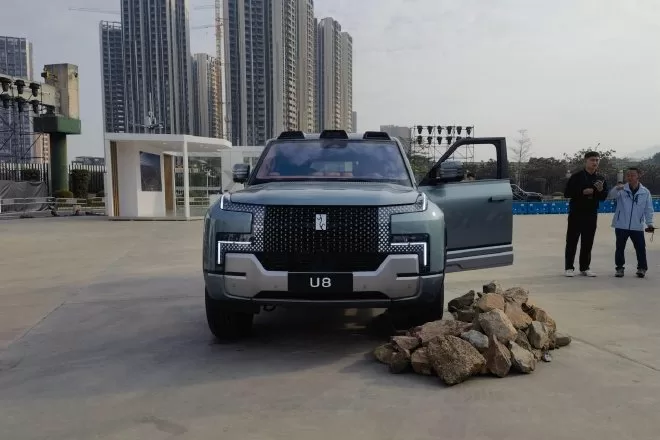
The U8 is equipped with the Cloud Chariot-P, which integrates three core technologies of mechanical, hydraulic, and electronic control. It is specially designed for off-road driving. One of its functions is to achieve an extremely long suspension adjustment travel, which prevents bottoming out on off-road sections in both ultra-high and ultra-low modes, and lowers the center of gravity during high-speed driving. The leveling function was demonstrated on site, showing that the U8 cabin can remain absolutely level even when the four wheels are at different heights, providing a stable platform for resting inside the vehicle.

BYD’s Xuanji architecture is a newly launched integrated electronic and electrical architecture solution for the whole vehicle. It is named after the two main stars of the Big Dipper, Xuan and Ji. It will integrate and collaborate with the whole vehicle platform to build the intelligent foundation of the whole vehicle. It has features such as central computing, multi-level backup, software and hardware decoupling, and service orientation. BYD has applied for more than 200 related patents for it.

The Xuanji architecture adopts a cross-domain integration solution, enabling inter-core communication of system data and optimizing interaction links to greatly increase speed. It achieves the highest hardware integration in the world: the entire vehicle integrates a total of 85 functional modules. With the industry’s most visual programming service interfaces and API standard interfaces, the Tianxuan cross-domain computing platform’s SoC + restructured chip intelligent computing platform solution can provide intelligent services for vehicles throughout their entire lifecycle. In addition, at the advanced level of technology, the Xuanji architecture also has very high safety redundancy. Under the “341 comprehensive security” system, it includes triple redundancy of inter-domain, path, and bus, a four-layer native network security barrier, and the world’s first full-vehicle holographic omnidirectional perception protection system – Cloud Shield, further enhancing vehicle safety.
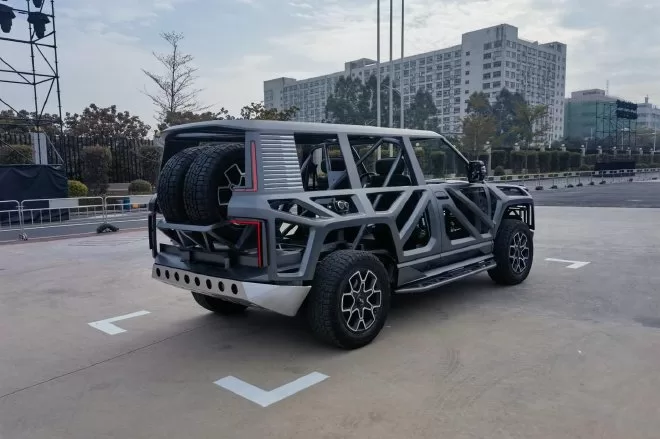

The concept car of Yifour appeared at the Guangzhou Auto Show in November, equipped with a four-motor independent drive architecture. It features “black technology” such as turning on the spot, agile steering, extreme anti-skid, and emergency floating. Its two major highlights are the lack of brake pads and calipers, and the absence of steering rods and wire control mechanisms, achieving braking and steering without relying on traditional mechanisms.
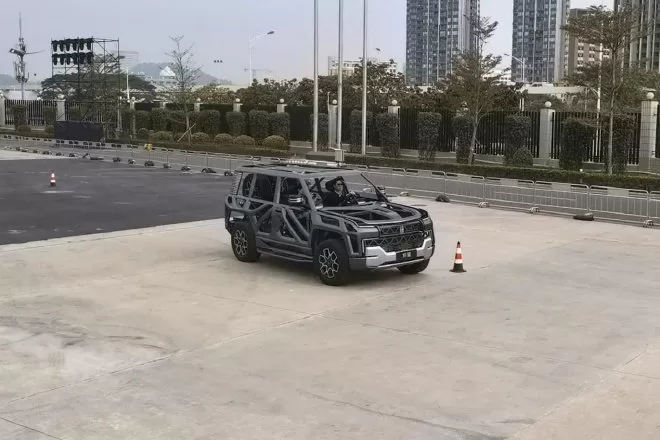
The snake-shaped obstacle course is set up on the scene, and the BYD Tang EV can reach a maximum speed of 60 kilometers per hour. In terms of braking, it can achieve a maximum braking force of 1.0g and a minimum braking distance of 20 meters. The visual effect and sense of technology are full of presence as the car effortlessly maneuvers through the area with its heavy Cyberpunk style. Intelligent cockpit Compared to the rational intelligence of the entire vehicle, the experience of the intelligent cockpit is much more emotional. In the smart district, BYD has also designed a full-scenario digital key, full-scenario smart voice, gaming car, outdoor camping karaoke, and a car-mounted drone display stand to comprehensively demonstrate its practice and exploration in the intelligent cockpit.

BYD’s intelligent entry system includes three types of key fobs: Bluetooth key, NFC digital key, and UWB digital key. Many people may not know that BYD was actually the first Chinese car brand to introduce UWB digital keys, which currently support Apple, Samsung, and vivo brands, as well as wearable devices. At the event, BYD introduced a new palm key, which uses palm vein data to quickly and conveniently enter information, becoming a biometric key. The palm key works similar to the recently launched “palm payment” by WeChat – simply face the palm towards the B-pillar to quickly lock or unlock the car.
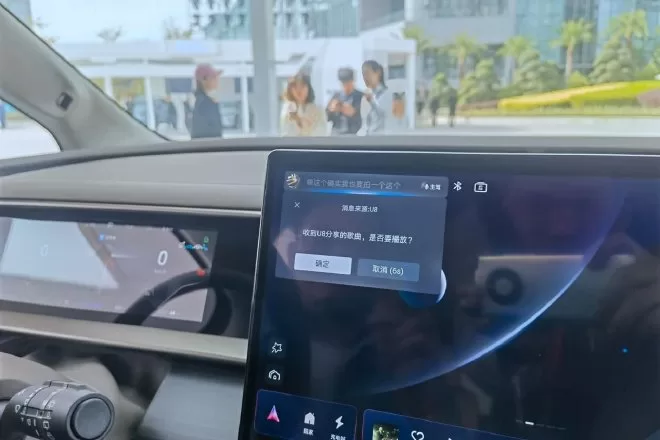
BYD’s full-scene intelligent voice wake-up response time is short, only 300ms, and can operate 1000+ core vehicle control functions with 100% coverage. In our experience car, it also brings two new features: one is the multi-car smooth connection function, which pre-establishes point-to-point vehicle contact through VIN, and two cars can send instant messages or information flow through voice; the other is the travel assistant function under the blessing of AI, as long as you say the purpose of the trip, the system will automatically recommend all the precise itinerary, road conditions, hotels and accommodations down to the minute.

With the increasing computing power of in-car chips, playing racing games in the car is nothing new. However, BYD has upgraded the in-car gaming experience by using a customized gaming steering wheel with a decoupled steering column. During gaming, the steering column disconnects, the tires do not follow the movement, and the vehicle does not move, ensuring the safety of the user during gaming. In addition to racing games, casual entertainment, action-adventure, simulation, and card games will also be launched one after another.
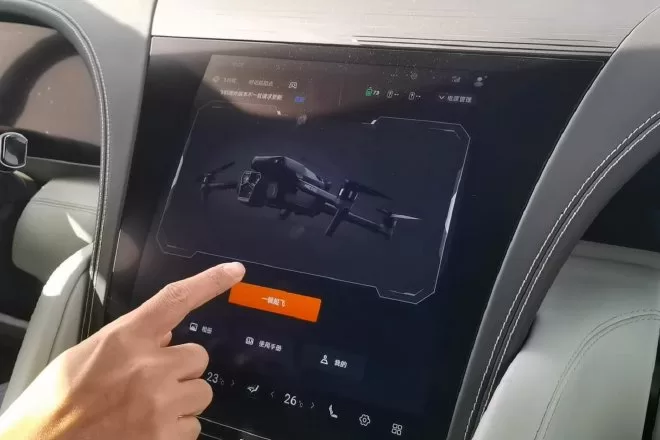
A few years ago, the on-board drone in a concept car promotional video has finally become a reality. The custom drone system, developed jointly by BYD and DJI, is mounted on the roof of the E-LOOK U8 and consists of a drone, flight battery, remote sensing module, remote control, and vehicle flight control app.
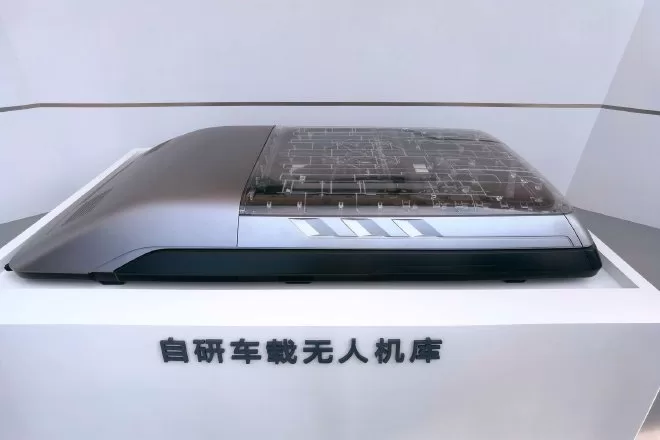
The most stunning is undoubtedly the drone hangar, which can automatically change and charge the battery before takeoff and after landing, and the apron can be automatically lifted during takeoff and landing without manual assistance. Intelligent driving

Intelligent driving is the highlight of this smart experience. BYD deeply integrates the advanced intelligent driving assistance system of the Tengshi N7 with the God’s Eye, a full-scene intelligent driving system, all self-developed by BYD in terms of hardware, software, and algorithms.
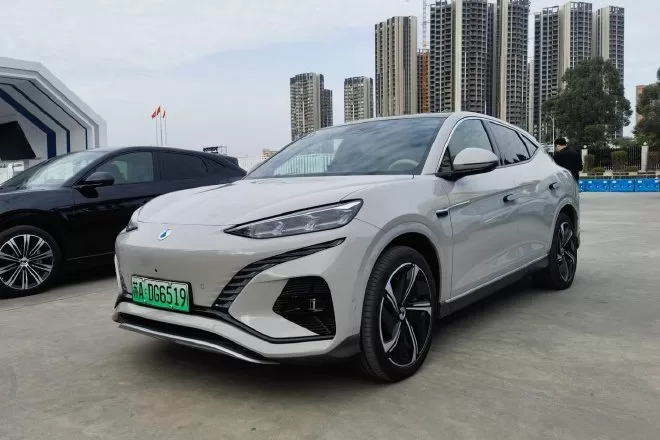
The TSN system on the Tengshi N7 uses two long-range high-precision laser radars placed on the vehicle’s bumper, ultra-high-definition cameras surrounding the vehicle, and millimeter-wave radars to integrate self-vehicle status data for comprehensive decision-making. It covers two major usage scenarios: high-speed/city NOA and all-scenario intelligent parking. This NOA system can complete driving tasks such as entering and exiting ramps, actively overtaking, lane keeping, and cruising on highways; and in urban areas, it can accomplish tasks such as intersection passage, traffic light passage, overtaking, intelligent obstacle avoidance, lane keeping, cruising, lane changing, and yielding to pedestrians and non-motor vehicles. BYD has directly launched the urban NOA driving experience around the BYD factory in Pingshan. Within the coverage area of highways and expressways, urban NOA can follow navigation and complete the intelligent driving assistance task from the starting point to the endpoint. When entering the section covered by high-precision maps, simply pull the paddle behind the steering wheel to enter NOA.
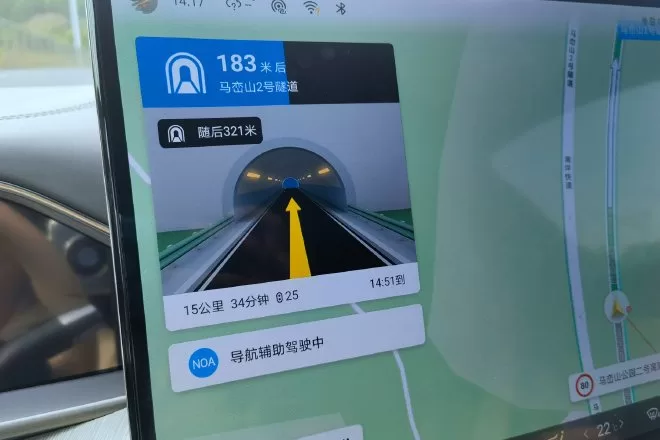
This system is based on laser radar and high-precision maps, and cannot be activated on sections where the function is not allowed. It is important to note that, at the current level of technology and legal requirements, any type of intelligent driving is only an assistance, and the driver still cannot completely rely on the system, and still needs to keep their hands on the steering wheel.
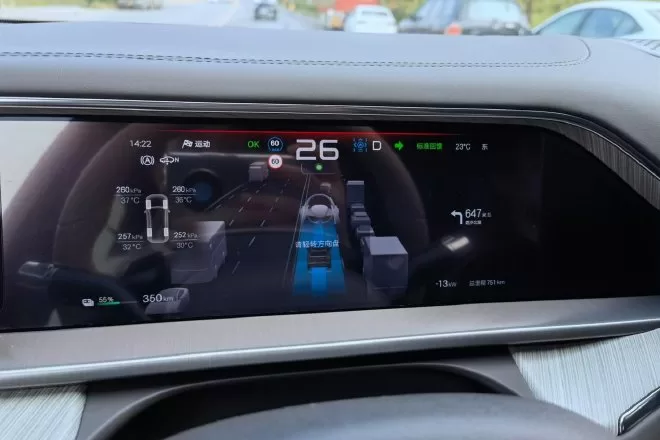
The dashboard displays surrounding road conditions with great precision, showing nearby traffic participants, lanes, traffic lights, and more.
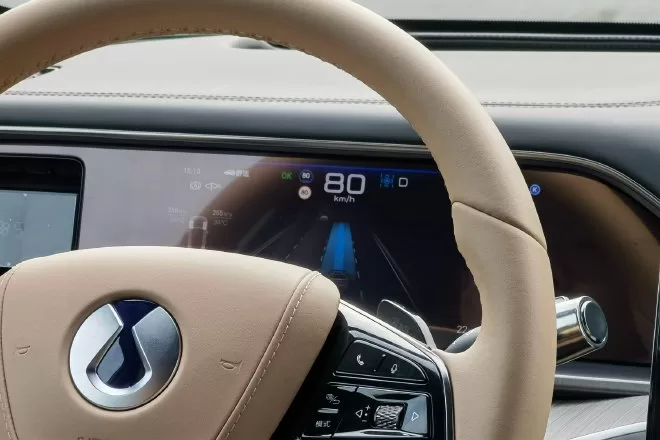
When facing a smooth and fast road, the system demonstrates mature route planning and excellent timing for merging and changing lanes. It handles overtaking and obstacle avoidance with ease. It also gives early warnings about road construction ahead and smoothly exits the construction lane. Overall, its performance is flawless. According to the map information, the system intelligently chooses the timing for changing lanes based on the current road conditions when it senses a lane merging ahead. The overall style of this system is similar to other products, but its strategy is more conservative, prioritizing safety. When encountering pedestrians or bicycles on crosswalks or lanes, the vehicle stops and yields to them with a very low threshold, avoiding any risky maneuvers.
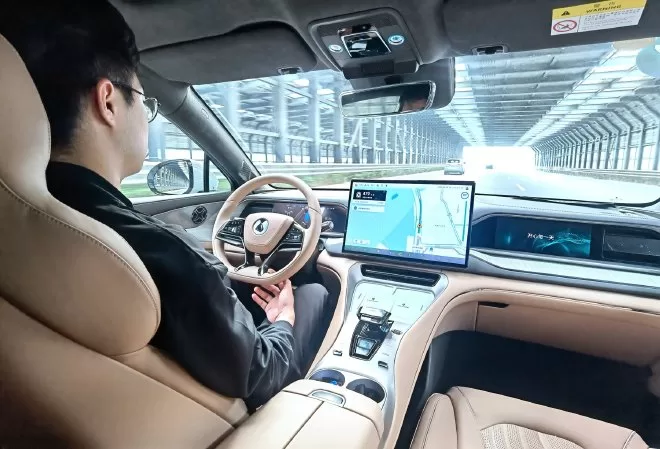
It has obvious ability to compete with surrounding vehicles, but the system’s logic is actually based on safety first. When a vehicle cuts in from the side, the system will actively make a slight deviation in direction to the other side, or simply stop to maintain a safe distance, but it will never borrow from the adjacent lane, and the tires will never cross the lane markings on the road surface. In busy sections of the road, facing crowded and unruly drivers, the system will appear timid, resulting in frequent braking and hesitation in the car.
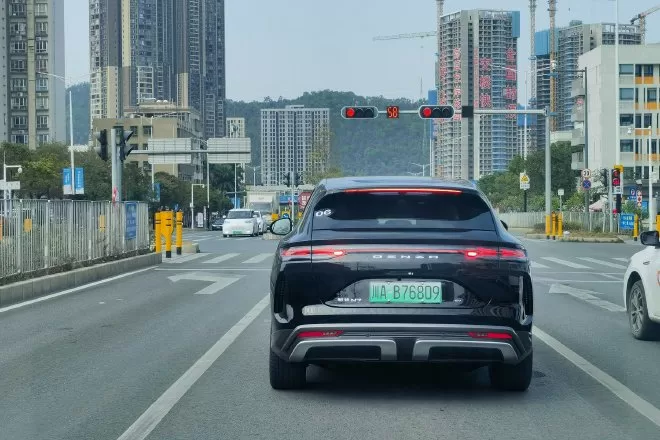
The urban area will inevitably encounter various traffic lights, the system can recognize standard traffic lights and identify the current signal changes, facing traffic lights, you don’t need to consider the problem of parking and starting at all, it’s all fully automatic. As for the road, even at intersections that are not perpendicular, it can accurately drive into the corresponding lane. When encountering a green light in the left turn lane and a green light in the oncoming straight lane, the system will also autonomously turn left based on the surrounding traffic conditions and try to enter the far left lane, even more compliant with traffic rules than the average driver. Full-scene intelligent parking EasyPark is a fusion of EasyPark technology and intelligent parking technology on the basis of vehicle intelligence. In the scenarios it can achieve, it can rotate into side parking spaces around the wheels, rotate into vertical parking spaces around the center of mass, adjust strategies autonomously in the face of different parking spaces, fully utilize every centimeter of parking space, and has two speed modes: comfortable and high-speed, with efficiency and safety factors stronger than those of experienced drivers.
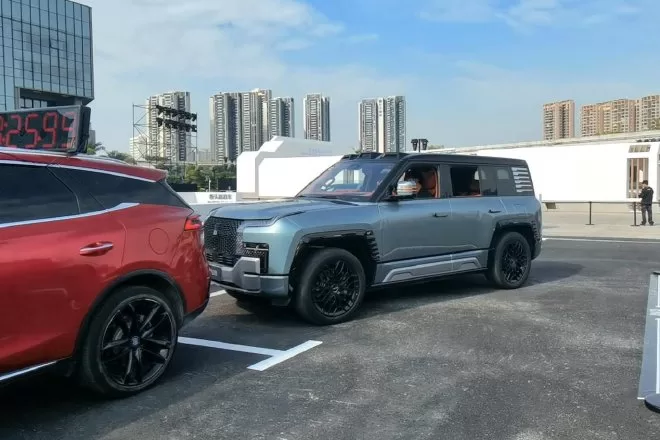
When parallel parking, we often encounter narrow side lanes. At the scene, a competition was set up to test the speed of parallel parking between people and cars. The U8 equipped with the EasyPark technology can rotate around the inner front/rear wheels to park the vehicle in a near drift-like motion. It takes less than 30 seconds from start to parking, significantly ahead of experienced drivers.
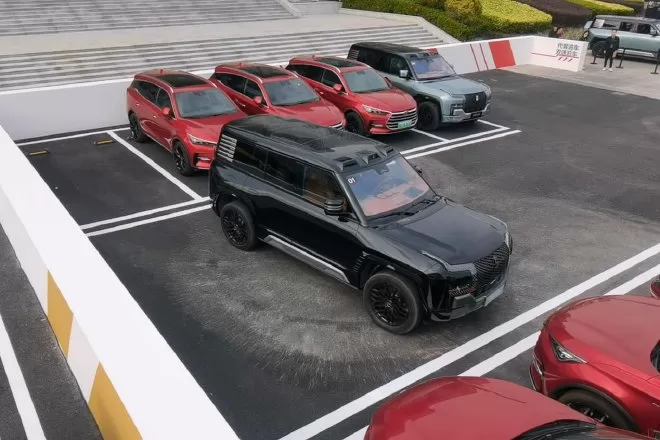
Short-distance valet parking allows for getting out of the car and walking away, locking the car and parking it, interrupting at any time, automatically resuming parking without the need for advance mapping and preparation, and can be used anytime and anywhere indoors and outdoors.

Driving in narrow streets, parking lots, or restricted areas can be challenging. The narrow lane function can help by using sensors to detect the surrounding space, allowing the vehicle to pass through and avoid obstacles automatically. The system currently allows for a maximum width of 12.5cm on each side of the vehicle, equivalent to the width of a rearview mirror. In summary, BYD’s slogan of “leader in new energy vehicles” has become a reality in the outstanding sales performance in the field of new energy. BYD has become the new focus of the automotive market, thanks to its continuous investment in technology research and development. As the key period for the transformation of new energy vehicles approaches, BYD is increasing its investment in the intelligence of various aspects of the vehicle in order to continue leading in the future competition. Following BYD’s concept of “technology fish pond” for technical accumulation, the projects in the BYD intelligent district that we have checked in on are just a glimpse of BYD’s intelligent technology. What kind of “black technology” will BYD bring us in the future to surprise us?